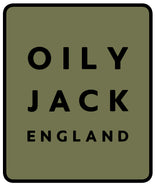The Background of Wax
Beginning in 1894, Barbour has a remarkably long and devoted history with waxed cotton. One may argue that, in the modern world, our relationship with this fabric for clothes is the oldest and most enduring.
When John Barbour established J. Barbour & Sons in 1894, South Shields in the North East of England was a bustling port. The need for garments that would keep all the sailors, fisherman, river, dock, and shipyard employees dry was therefore high, according to Barbour. Oilskin was the word used to describe this heavy waterproof fabric at the time, when Barbour created a line of apparel under the Beacon Brand name. Contrary to common misconception, we did not invent Oilskins, and even the original inventor of Barbour was not the first to weatherproof fabric with oils and waxes.
It was first done in the 15th century to impregnate fabric to make it waterproof. When at sea, sailors would oil and grease their thick sailcloth and homemade weatherproof capes to ward off the blustery winds and pouring rain. The fleet of British clippers at the time employed oiled flax sails produced by the Scottish sailmaker Francis Webster Ltd. in 1795. Linseed, a tiny seed, was produced as a by-product during the processing of flax. It was discovered that the linseed oil could be used to coat the flax sailcloth to make it weatherproof when these seeds were ground into a paste. This process resulted in a fabric that resembled wax cotton material that we are familiar with today.
The fabric of the original Oilskins had issues, including stiffening up and turning a shade of yellow in extremely cold conditions. Consequently, a new generation of proofed cottons was produced in the 1930s. The newly developed paraffin impregnated cotton created a highly water resistant fabric that was softer than anything that came before it and made specifically for outerwear. This cotton was woven in Scotland by Webster, dyed there, transported to London for a cupro-ammonia treatment, waxed there, then sold and distributed in Scotland. For the first significant test, the extremely conservative Scottish corporation shipped the product to New Zealand, which is on the opposite side of the globe.

Leave a comment